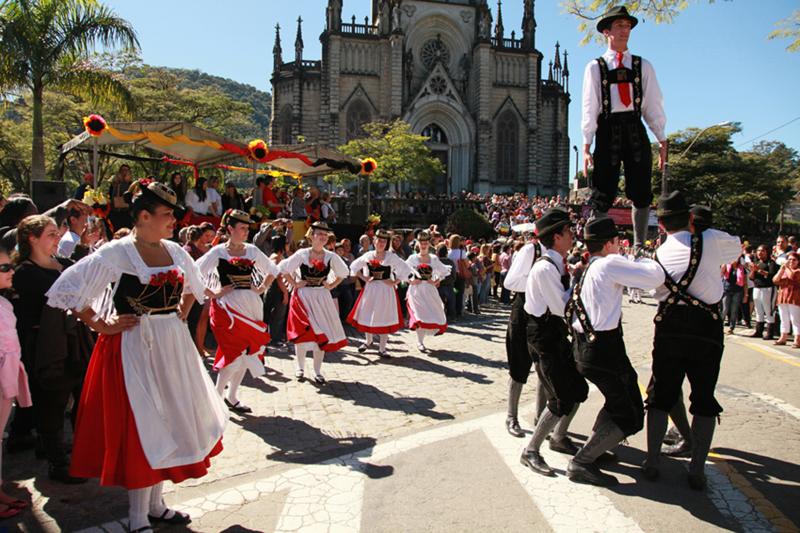Friday, June 30th |
|
| OPTIONAL TOUR (Day Trip) | |
|
08.00 |
Meet at hotel lobby to leave for tour |
|
08.30 |
Travel to Petrópolis |
|
09.30 |
Pause for photos at Scenic View (Christ’s Cross) |
|
10.00 – 12.00 |
Walking tour (Crystal Palace – Bohemia Brewery – Avenida Koeller – Rio Negro Palace – Cathedral of Saint Peter of Alcantara – Imperial Museum) |
|
12.30 |
Transfer to Restaurant |
|
13.00 (e.t.a.) |
Arrival at Lago Sul Restaurant |
|
13.00 – 15.00 |
Lunch |
|
15.00 – 16.00 |
Visit to Hotel Quitandinha |
|
16.00 |
Board bus for Rio |
|
18.00 (e.t.a.) |
Arrival at hotel |
| OPTIONAL TOUR (Evening) | |
|
21.00 – 00.00 |
Rio Scenarium |
Petrópolis: Latin’s America Imperial City
Only an hour’s drive from the city of Rio (68 km) along a scenic road through the Atlantic Rainforest, Petrópolis is a popular destination for adventurous Brazilian nature lovers (it stands at 815 mts/2,400 ft) or those looking to understand a bit about the Country’s history.
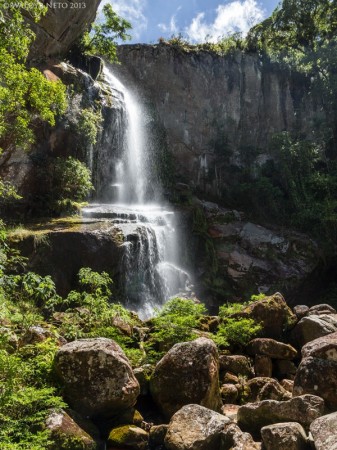
The Veu da Noiva is a popular day hike in the Serra dos Órgãos National Park near Petrópolis, Brazil. It is also the location of natural pools and waterfalls fed by mountain springs. Photo courtesy of Waldyr Neto.
Named after Dom Pedro II, the second Emperor of Brazil, Petrópolis literally means “Peter’s City” and it proudly displays its historical charm. The original cobblestone streets still wind through the city center, lined by colonial-era mansions.
Petrópolis was founded in 1845 and colonized by Bavarian immigrants (the urban design was carried out by Major-Engineer Julius Friedrich Koeler) under the sponsorship of Pedro II, the Brazilian emperor for whom it was named. The emperor was attracted by the site’s relatively cool climate, and held court there during the warmer months. His possessions, along with those of Pedro I and João VI of Portugal, remain in the ornate royal palace, now the Museum of the Empire (Museu Imperial). The city was the summer residence of the Brazilian Emperors and aristocrats in the 19th century, and was the official capital of the state of Rio de Janeiro during the First Brazilian Republic, between 1894 and 1902.
On a visit to the Philadelphia Exposition of 1876, Pedro II was impressed by Alexander Graham Bell's new invention, the telephone, and had a line connecting his Summer Palace to his farm headquarters.
Its Neo-Gothic cathedral of Saint Peter of Alcantara, which dates back to 1884, is recognizable at night by its blue-lit steeple. Guarded by its vaulted ceiling is the final resting place of Dom Pedro II; his wife, Dona Teresa; and their children – the last reining imperial family of Brazil.
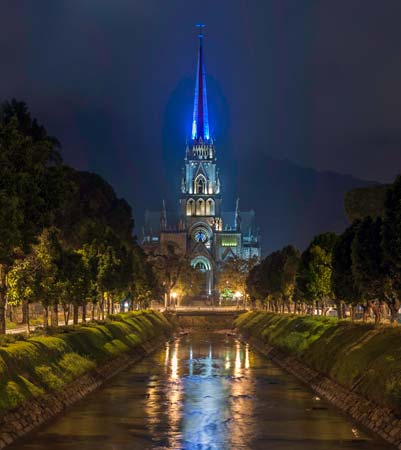
Just down the road, precisely in the center of the city, is the royal family’s Imperial Palace, used as a summer residence by D. Pedro II and his family. President Getúlio Vargas turned it into a museum in 1940; its collection, which has emblematic pieces such as the emperor's crown, is distributed in rooms that reconstruct the daily life of the family in Petrópolis and presents cultural, political, social and economic aspects of Brazil in the 19th century.
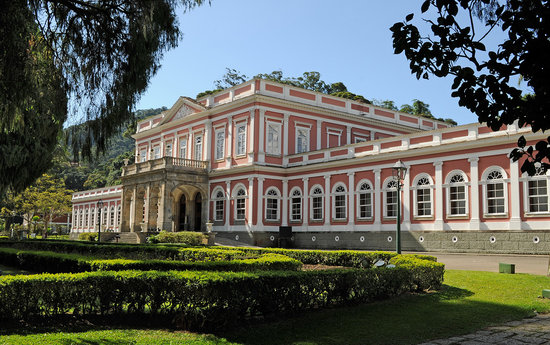
Crystal Palace. Built after the Crystal Palace in London, for the World Exhibition, this structure was commissioned by Conde D’Eu for his wife, Princess Izabel, daughter of Pedro II.
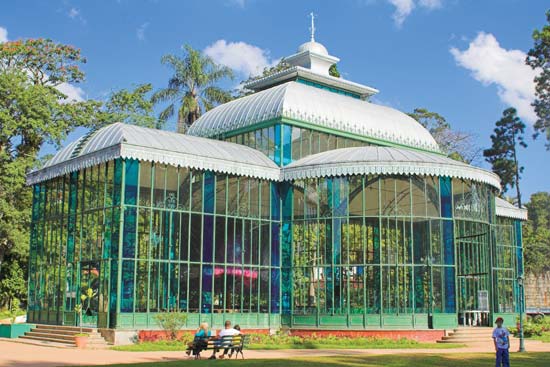
The Rio Negro Palace, which has been the summer residence of many Brazilian presidents (located on Avenida Koeller).
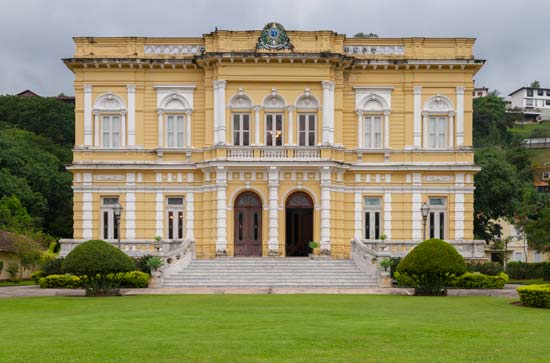
The Bauernfest, which has been taking place since 1990, is an event linked to the German presence in Brazil, with its national roots and its own identity. The tradition began with small parties at the beginning of the 20th century, in the Fazenda Inglesa neighborhood, where the first settlers promoted the return to their origins with music, dance and traditional German dishes.
In 1983, the 29 of June Club, which reunites descendants of the colony, had the idea to transform the party into one where everybody would have access to information on the history and the traditions of the Germans who colonized the city of Petrópolis. From 1990 on, in partnership with the Municipality of Petrópolis, the event began to expand, becoming the present-day Bauernfest, being of great importance for the tourism and cultural calendar of the City.
